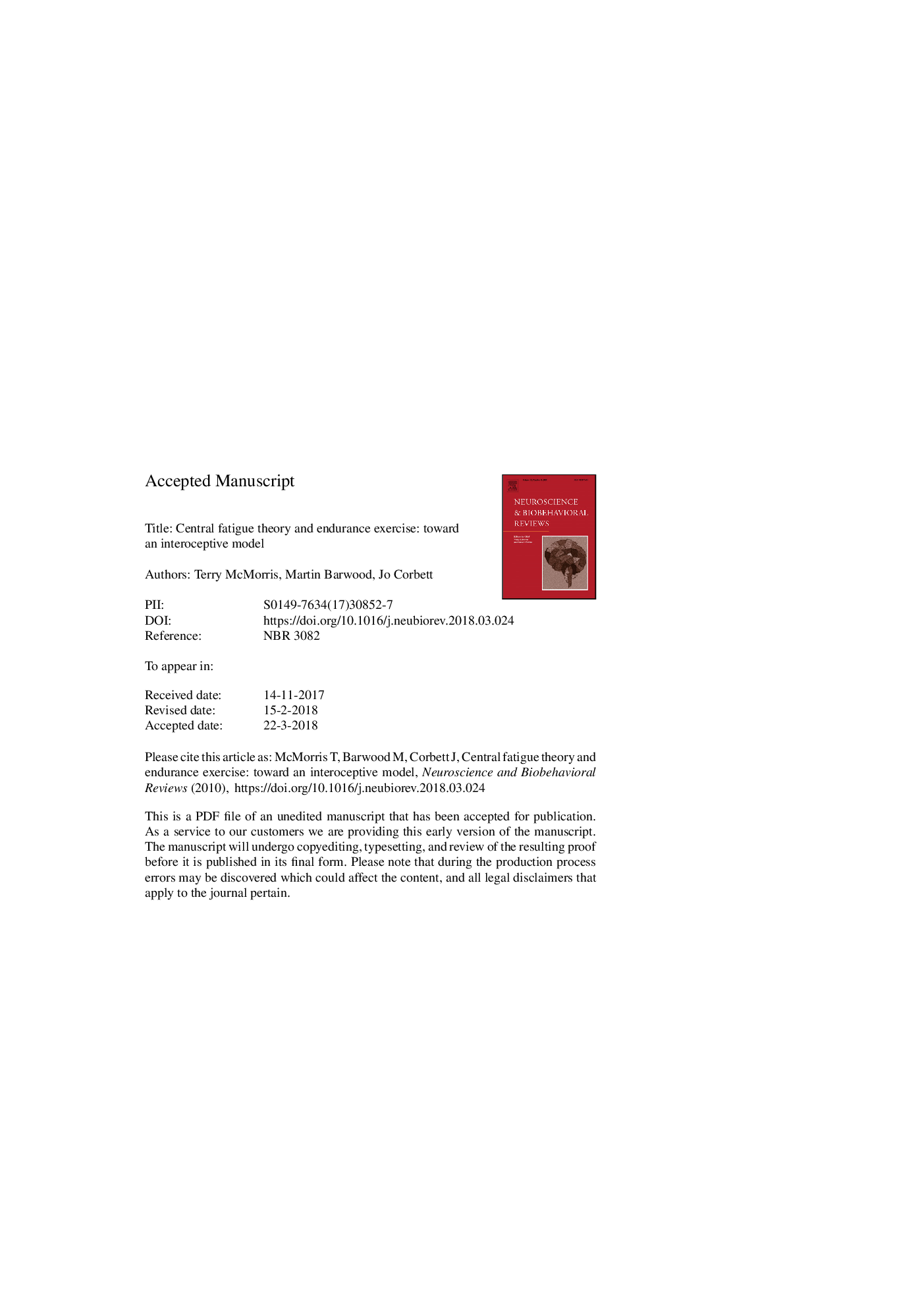| Article ID | Journal | Published Year | Pages | File Type |
|---|---|---|---|---|
| 7301505 | Neuroscience & Biobehavioral Reviews | 2018 | 73 Pages |
Abstract
We propose a model of exercise-induced central fatigue based on interoception and motivation. Predictions of the expected sensory feedback are fed forward by the dorsolateral (DL) prefrontal cortex (PFC) to the anterior insula cortex (AIC). During exercise, the AIC receives feedback from lamina â
lateral spinothalamic and nucleus tractus solitarii medullothalamic pathways. The feedback is compared to the predictions in order to generate a current awareness state, which is forwarded to the anterior cingulate cortex (ACC), ventromedial (VM)PFC and lateral (L)PFC. The LPFC integrates the information and makes a decision as to whether to continue or stop. The decision is dependent upon interaction with the substantia nigra pars compacta and ventral tegmental area dopamine (DA), and locus coeruleus (LC)-norepinephrine (NE) systems. Phasic activation of DA and NE neurons appears to be necessary for maintenance of goal-related action but the VMPFC and ACC, which project to the LC, induce tonic NE activity when the rewards are thought to be not worth the cost thus fatigue is perceived.
Keywords
Related Topics
Life Sciences
Neuroscience
Behavioral Neuroscience
Authors
Terry McMorris, Martin Barwood, Jo Corbett,
